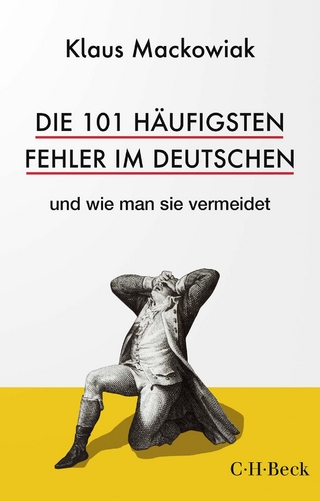
The Rhetorical Rise and Demise of "Democracy" in Russian Political Discourse, Vol I
Academic Studies Press (Verlag)
978-1-64469-732-0 (ISBN)
shootdown of KAL 007 and the 1986 Chernobyl nuclear accident dramatically changed
the Soviet Union in unpredictable ways. The Communist Party, which struggled to
maintain control of political messaging after the KAL crisis, lost control in
the aftermath of Chernobyl.
The essays in this book examine the arguments and rhetoric used by the United States and the USSR following two catastrophes that impacted both countries, as blame is cast and consequences are debated. In this environment, it was perhaps inevitable that conspiracy theories would arise, especially about the downing of Korean Air Lines Flight 007 over the Sea of Japan. Those theories are examined, resulting in at least one method for addressing conspiracy arguments. In the case of Chernobyl, the disaster ruptured the “social compact” between the Soviet government and the people; efforts to overcome the resulting disillusionment quickly became the focus of state efforts.
David Cratis Williams is Professor of Communication and Rhetorical Studies at Florida Atlantic University. His scholarship focuses on argumentation, rhetorical theory, and criticism; he is a recognized authority on Kenneth Burke. His work on Russian political discourse began during a meeting in Russia in January 1992. Marilyn J. Young is the Wayne C. Minnick Professor of Communication Emerita at Florida State University. Her research has focused on political argument with an emphasis on the development of political rhetoric and argument in the former Soviet Union, particularly Russia. She remains an active scholar in retirement. Michael K. Launer is Professor Emeritus of Russian at Florida State University. In 1987 he interpreted for the first group of Soviet scientists visiting the US following Chernobyl. A State Department certified technical interpreter, he supported Nuclear Regulatory Commission and Department of Energy assistance programs through 2012.
Table of Contents Acknowledgements
List of Interviews and Personal Communications
Note to Readers
Preface
Introduction to Volume One. Image and Reality: The Declining Role of Evidence in Public Discourse
Part One: Kal and Cracks in the Rhetorical Wall
Route R-20—Terry Graves Illustration
Takahashi—Novosti Satellite Map
Ogarkov Double Loop Map—The New York Times
Map Credits
1. Did the United States Suppress Ground-to-Air Communications?
2. KAL 007 and the Superpowers: An International Argument
3. The KAL Tapes
4. BCAS Correspondence: “Flight 007: Was There Foul Play?”
5. The Need for Evaluative Criteria: Conspiracy Argument Revisited
6. Soviet Media Tactics and the Body Politic: Prevention and Treatment of Communicable Diseases
7. When the Shoe Is on the Other Foot: Comparative Treatments of the KAL 007 and Iran Air Shootdowns
8. Of Mighty Mice and Meek Men: Contextual Reconstruction of the Iranian Airbus Shootdown
9. “007”—Conspiracy or Accident?
10. Flight 007
11. Carlos the Jackal Attacks RFE/RL!
Part Two: Chernobyl, Eco-Nationalism, and Loss of Rhetorical Control
The Original Sarcophagus (1989)
The Interior Access Door to Unit 4—Укрытие (1989)
A Billboard at the Rovno Nuclear Station (1996)
New Secure Confinement (2019)
Photo Credits
12. Chernobyl in the Soviet Media: Unintentional Ironies, Unprecedented Events
13. Redefining Glasnost in the Soviet Media: The Recontextualization of Chernobyl
14. Chernobyl: From the Ashes a New Society?
15. Nuclear Power in the USSR
16. Civilian Nuclear Power in the Commonwealth of Independent States: A Case of Cognitive Dissonance
17. Soviet News Media: Uncertainty in the Throes of Change
18. Nuclear Power and Ecological Debates in the Soviet Press, Mid-1988 to Mid-1989
19. The Final Days: The Development of Argumentative Discourse in the Soviet Union
20. Ukraine Nuclear Power Struggles for Survival
21. Nonrational Assessment of Risk and the Development of Civilian Nuclear Power
22. Ukraine, Russia, and the Question of Nuclear Safety
23. Soviet Bureaucracy and Nuclear Safety
24. Review of Two Books by David R. Marples
25. Review of Plutopia
26. Review of Plokhy, Chernobyl
27. Pseudo-Science and Potemkin-History
28. Confronting Climate Change: Assessing the Role of Nuclear Power
Afterword
Index
Bibliography
| Erscheinungsdatum | 03.08.2021 |
|---|---|
| Zusatzinfo | Illustrations, unspecified |
| Verlagsort | Brighton |
| Sprache | englisch |
| Maße | 155 x 234 mm |
| Themenwelt | Geisteswissenschaften ► Sprach- / Literaturwissenschaft ► Sprachwissenschaft |
| Sozialwissenschaften ► Politik / Verwaltung ► Politische Theorie | |
| Sozialwissenschaften ► Soziologie | |
| ISBN-10 | 1-64469-732-7 / 1644697327 |
| ISBN-13 | 978-1-64469-732-0 / 9781644697320 |
| Zustand | Neuware |
| Haben Sie eine Frage zum Produkt? |
aus dem Bereich


